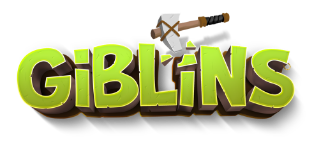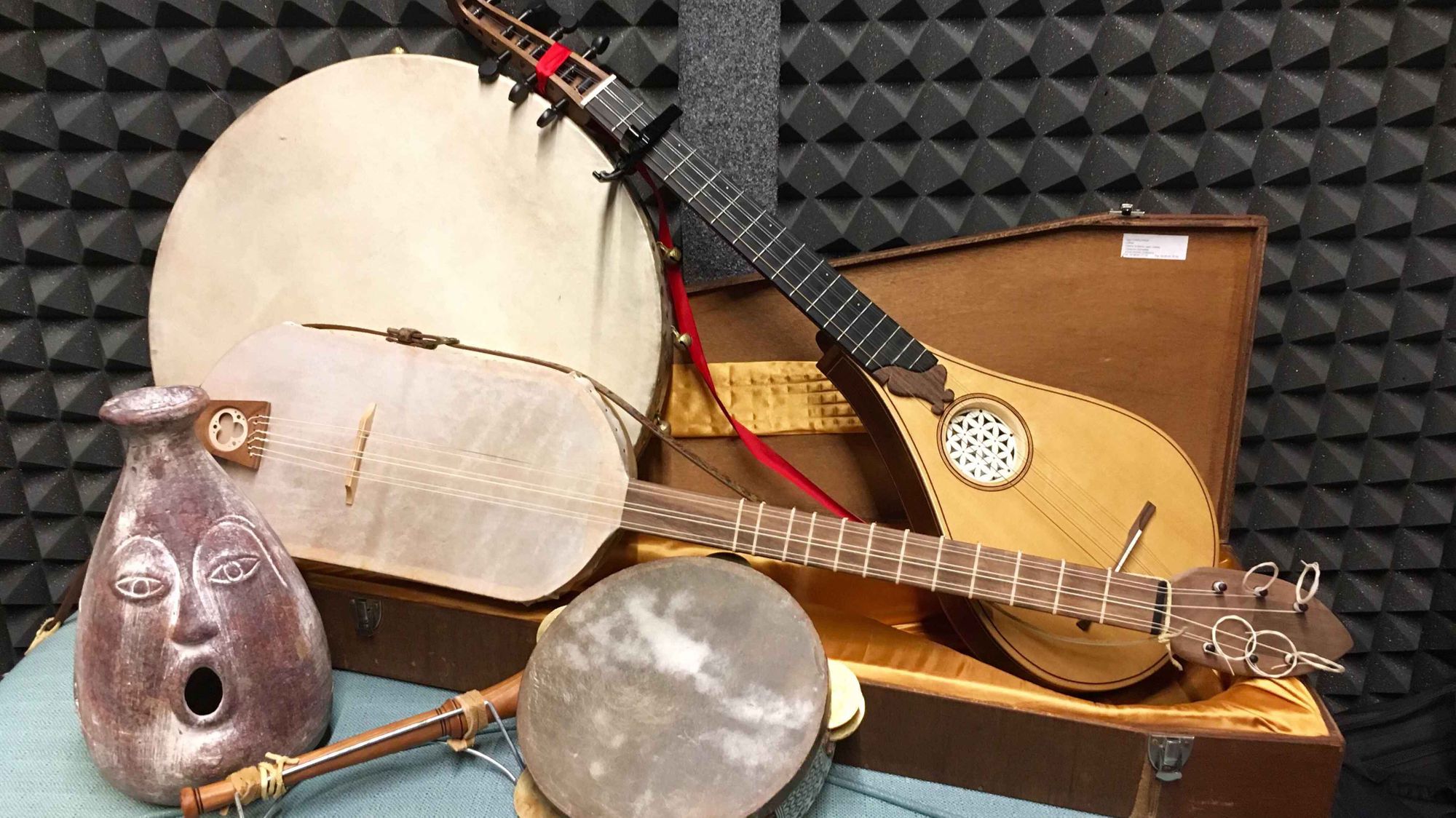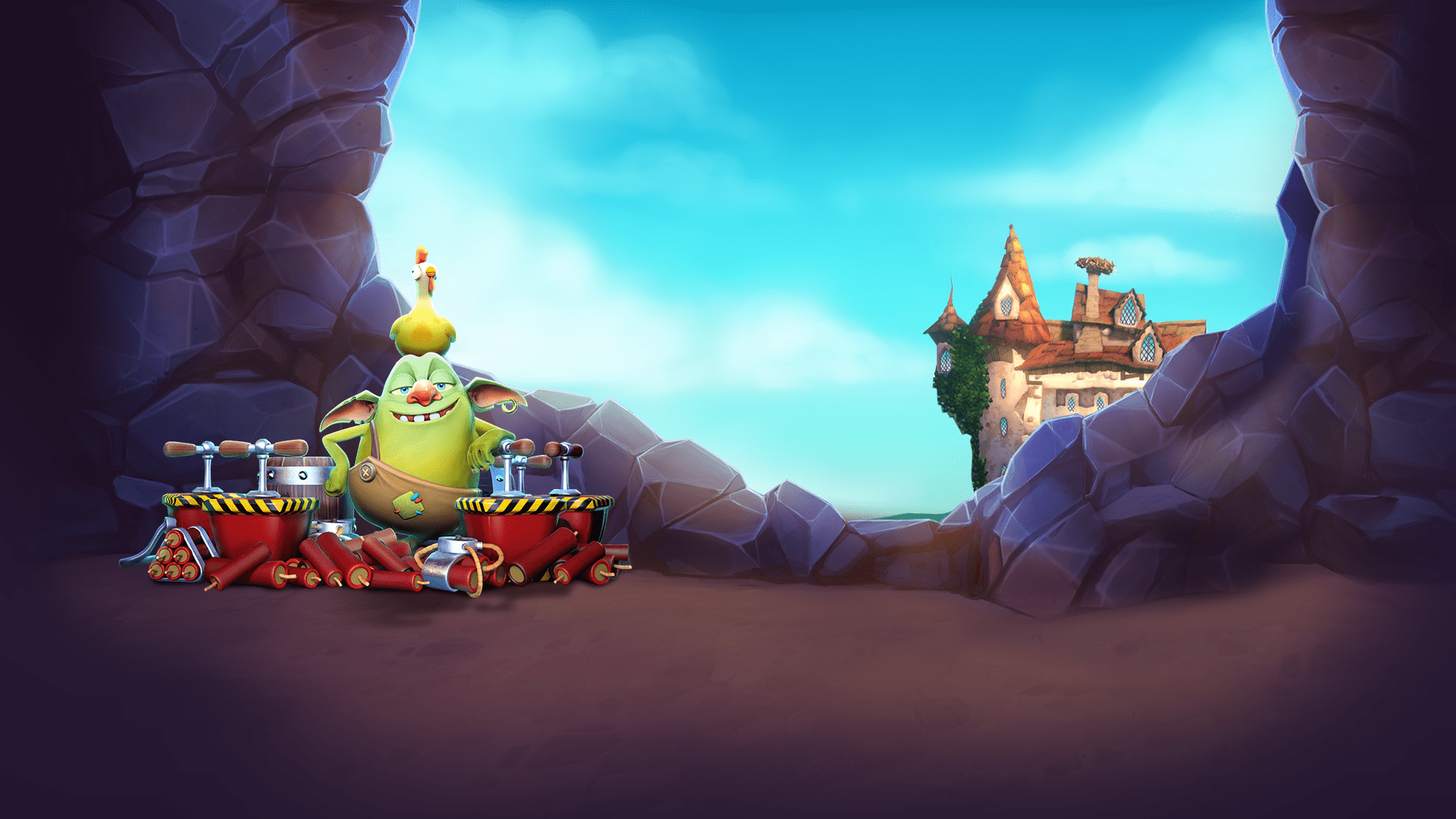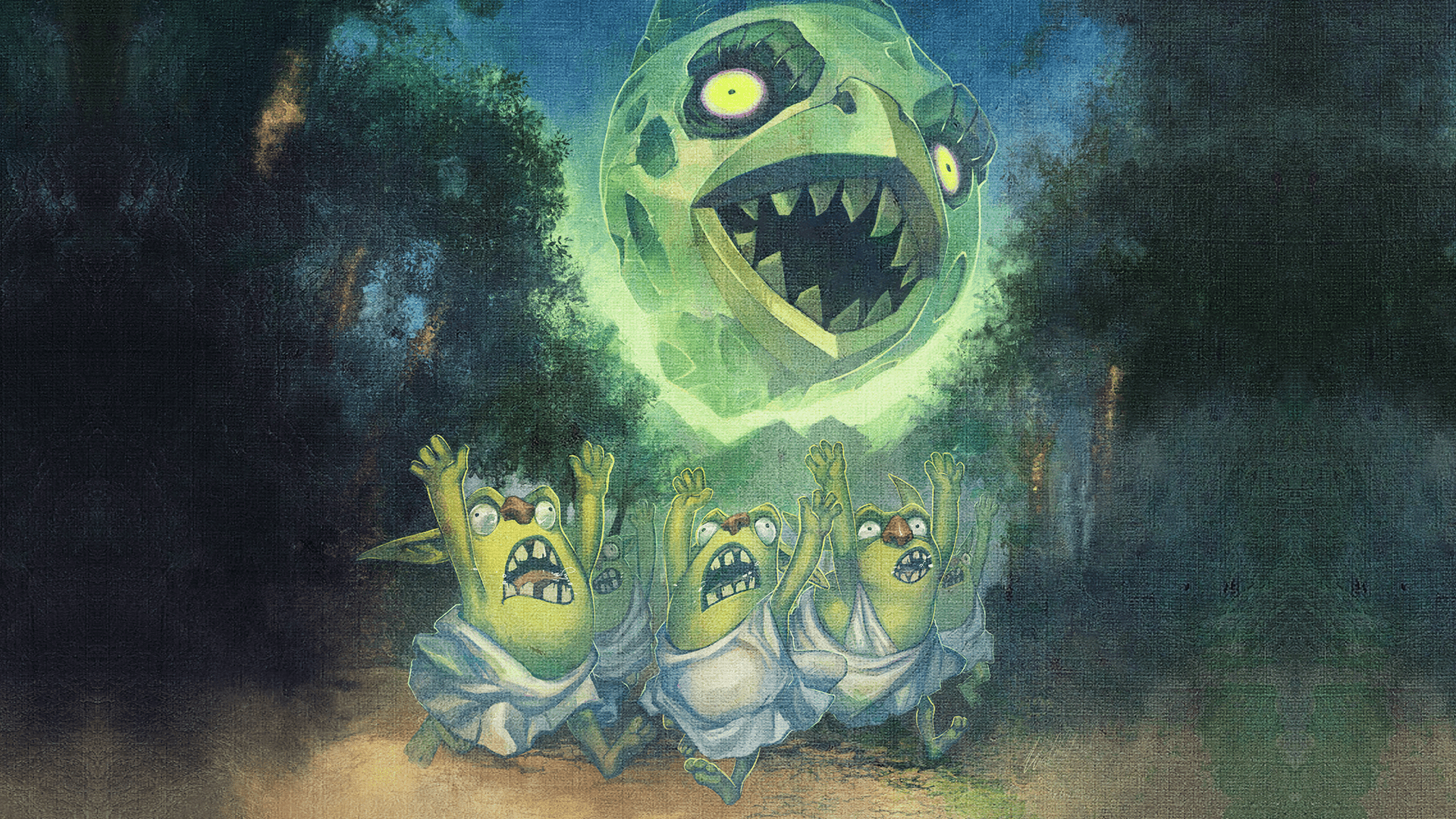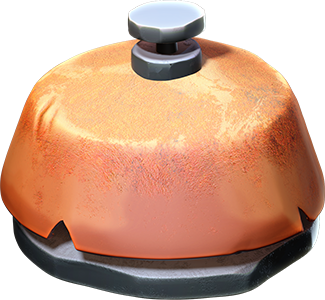Hi Mathieu! To begin this interview, can you please introduce yourself, your job and your role in producing Giblins?
I am a Senior Sound Designer and I’ve been working at Behaviour Interactive for 14 years. My job is to design, prepare, record and integrate everything that will make up the player’s audio experience. This can include environmental sounds, SFX, sound effects, voices, grunts and even music.
When did you join the project?
I joined the team fairly early on and was able to draw inspiration from the initial art concepts to begin thinking about what kind of sound and music we wanted to produce and what sound palette we should use. One of the first things I did was to imagine what the game’s music would be like, with a humorous touch to it, as that’s a key aspect of the game. I find that the world of video games often takes itself too seriously, and when I was a teenager I was very much immersed in D&D and heroic fantasy. So, the fact that Giblins is a little disjointed, a little zany and a tongue-in-cheek take on the genre, really appealed to me. I’m also a musician and specialize in ancient music: I play medieval, renaissance and baroque music with several ensembles. I perform sea shanties with a pirate band and basically I really love acoustic music and different instruments, I find them fascinating.
That’s why I wanted a much more organic kind of sound, using real instruments. We collaborated with Sean Dager, who is best known for his work on the Assassin’s Creed series: he’s an expert on sea shanties and Celtic music, and he created the first pieces for this game. Three of his pieces can still be heard in the final version of the game, the rest are my own, which I worked on from start to finish.
When you say “from start to finish”, does that mean from writing them to the sound mixing and their integration into the game?
Exactly! Except for the three pieces that Sean produced, all the rest were written or arranged by me, and I recorded most of them directly in the Behaviour studio. It really is home-made. I tried to base my work on themes from medieval music as much as possible, and I used my collection of ancient instruments to add variety to the sounds and textures.
That’s right, you have a very impressive collection! How many instruments do you have?
A lot! Most of them are plucked string instruments, but I also have percussive instruments, all kinds of sound textures to explore when creating. It’s fun to start with real instruments, sometimes based on the suggestions of the game team, which really stimulate creativity. I like being given a challenge or a constraint, it gives me a spring board from which to create. As I’m the one who creates all the music, I can ensure that all the additions, all the different instruments, remain coherent.
The same goes for SFX: I recorded a large part of them myself using different objects to produce sounds like tools or clothing. Sometimes you need to do some tests to find the best way to produce the desired sound effect, and sometimes it’s an artistic approach, like for the forge environment: the Giblins jump on the forge’s big bellows and from the outset I wanted to use an accordion-like sound for this. It’s a cartoony yet realistic approach because it uses the real, organic sound of the accordion bellows, and hearing the flow of air just serves to add color.
Can you tell me about the different stages of sound production, from designing a sound to the final effect?
The first step is to create the sound, either by recording original material in the studio or by digging through sound libraries to find a crack or a low-frequency rumble and then, for example, adding a bell over it at a given moment. This means building different sound textures using different audio software, and then integrating these into what we call an audio engine. For Giblins, we used Wwise, a program developed in Montreal. This is the software that is connected to the game and manages the entire audio experience. We use this software to create different tracks and different events that are programmed to trigger certain sounds and link them. Once all of this is integrated into the software, it can then be integrated into the game itself, meaning we’ll put the trigger in a precise frame of the animation, so that as soon as a character performs an action, the given sound is played. Then we test it to make sure it fits and make adjustments if we identify any problems. What I like about this project and about working at Behaviour is that I can be involved in every step of the process. It really is an artisanal approach, which is how I prefer to work.
You’re right, it really is artisanal, almost like a carpenter sourcing the wood and completing all the steps until producing the finished product.
Yes, I really do define myself as an artisan. My work requires creativity and an artistic sensibility, but it is also extremely technical: recording, microphone, software knowledge, it really is a mix of the two. At the end of the day, in a video game studio, in a sense we’re all really artisans: developing video games also requires a lot of creativity.
Can you tell us in more detail about your inspiration for Giblins’ music?
For Giblins, what appealed to me from the very start was the universe of different characters and their musical signatures. For certain characters, I drew inspiration from Bavarian music groups who you might hear during Oktoberfest, but who play Lady Gaga covers, which I think is really cool...
One genre of music that inspired me is what is sometimes referred to as “Pagan Folk” and is popular in Germany and Scandinavian countries. When people ask me what Pagan Folk is, I like to tell them that it’s a bit like how we imagine medieval music to be: it’s folk music, but it uses traditional instruments like the hurdy-gurdy or bagpipes, with songs inspired by mythology and Norse gods. I listened to several of these bands and thought it was a good combination because it’s more accessible: even someone who never listens to ancient music can appreciate it; the format is closer to contemporary folk-pop so it’s not too obscure. I wanted to use traditional instruments but make accessible music. Bands like Faun or Omnia, or Skald for example, were good sources of inspiration.
Throughout the process, I discussed my ideas with Nicole, the Concept Artist for the project, to see what she thought, the important thing being that it was funny.
Finally, what sound was the most fun to record for Giblins?
There’s one that still makes me laugh: the character of Bubgloop has huge, bulbous eyes on either side on his head, and these huge eyes give him expression. I made the sound of his eyes blinking with my mouth, so that it would sound as glutinous as possible, and I think it works really well for the character. It makes me laugh because everyone wonders where that sound comes from.
